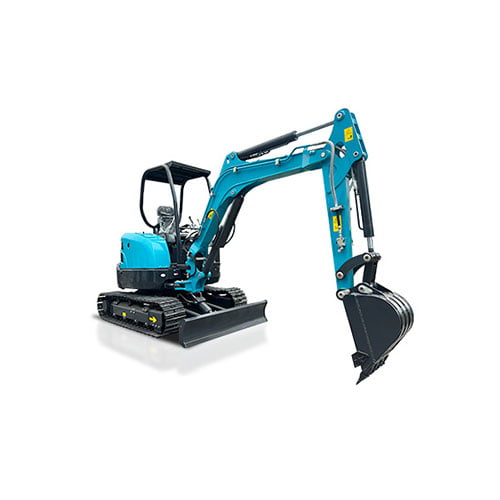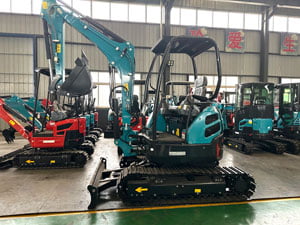Bienvenido a mi blog
Antes de sumergirnos en el contenido, me encantaría que te unieras a mí en mis plataformas de redes sociales, donde comparto más ideas, participo con la comunidad y publico actualizaciones. Así es como puedes conectar conmigo:
Facebook: https://www.facebook.com/profile.php?id=100072217509763
LinkedIn: https://www.linkedin.com/company/74949059/admin/dashboard/
YouTube:www.youtube.com/@tractormanufacturer-lc5qz,www.youtube.com/@fabricantes de excavadoras-sn9hk
TikTok: www.tiktok.com/@tractorfabricante, www.tiktok.com/@fabricantes de excavadoras
Empecemos nuestro viaje juntos. Espero que encuentres el contenido aquí perspicaz, atractivo y valioso.
Índice
Introducción


When it comes to purchasing or renting construction equipment, understanding the mini excavator cost is crucial for making informed decisions. Whether you’re a contractor, a business owner, or a DIY enthusiast, accurately calculating the expenses associated with a miniexcavadora can help you budget effectively and avoid unexpected financial burdens. This guide will walk you through the various factors that influence mini excavator cost and provide a step-by-step approach to calculating it accurately.
Factores que influyen Mini Excavator Cost
The mini excavator cost depends on several factors, including the type of excavator, its size, features, and intended use. Below are the key elements that contribute to the overall cost:
1. Purchase Price vs. Rental Rates
The initial mini excavator cost varies significantly depending on whether you choose to buy or rent. Purchasing a mini excavator involves a higher upfront cost but may be more cost-effective in the long run for frequent use. On the other hand, renting is ideal for short-term projects and reduces maintenance expenses.
2. Size and Capacity
Mini excavators come in different sizes, ranging from compact models to larger units. The size and capacity directly impact the mini excavator cost, as larger models with higher horsepower and digging depth tend to be more expensive.
3. Attachments and Accessories
Additional attachments, such as buckets, augers, and hydraulic breakers, can increase the mini excavator cost. While these accessories enhance the machine’s versatility, they also add to the overall expense.
4. Fuel Efficiency and Maintenance
Ongoing costs, such as fuel consumption and maintenance, are essential considerations when calculating the mini excavator cost. Fuel-efficient models may have a higher initial price but can save money over time.
5. Brand and Quality
The brand and build quality of the mini excavator also play a significant role in determining its cost. Reputable brands often come with a higher price tag but offer better durability and performance.
Step-by-Step Guide to Calculating Mini Excavator Cost


To accurately determine the expenses associated with acquiring and using this essential piece of construction equipment, follow these detailed steps. By breaking down the process, you can ensure that your budget aligns with your project requirements and financial goals.
Step 1: Determine Your Needs
Before diving into financial calculations, it’s crucial to assess the specific demands of your project. Consider the following factors:
- Project Scale: Will the equipment be used for a small landscaping job or a larger construction project?
- Requisitos de la tarea: What type of tasks will the machine perform? For example, digging, trenching, or demolition.
- Duration of Use: Is this a one-time project, or will the equipment be used frequently over an extended period?
Understanding these details will help you decide whether purchasing or renting is the better option. Additionally, it will guide you in selecting the right size and features, ensuring you don’t overspend on unnecessary capabilities.
Step 2: Research Prices
Once you’ve identified your needs, the next step is to gather pricing information. Here’s how to approach this:
- Compare Brands and Models: Different manufacturers offer varying price points based on quality, performance, and features.
- Explore Financing Options: Some dealers provide financing plans that can make the upfront expense more manageable.
- Look for Promotions: Seasonal discounts or special offers can significantly reduce the initial investment.
By conducting thorough research, you can identify the most cost-effective options that meet your project requirements.
Step 3: Calculate Ownership Costs
If you’re leaning toward purchasing, it’s essential to account for the long-term expenses associated with ownership. These include:
- Insurance: Protecting your investment against damage or theft is a necessary expense.
- Almacenamiento: Proper storage facilities are required to keep the equipment safe and in good condition.
- Transportation: Moving the machine to and from job sites can incur additional costs, especially if you don’t own a suitable vehicle.
Including these factors in your budget will give you a more accurate picture of the total expenditure.
Step 4: Estimate Operating Costs
Beyond the initial purchase or rental fee, there are ongoing expenses to consider. These operating costs can add up over time and should be factored into your calculations:
- Consumo de combustible: The efficiency of the machine will impact how much you spend on fuel.
- Mantenimiento: Regular servicing is necessary to keep the equipment in optimal working condition.
- Repairs: Unexpected breakdowns can lead to costly repairs, so it’s wise to set aside a contingency fund.
Using industry averages or manufacturer estimates can help you predict these expenses more accurately.
Step 5: Consider Resale Value
If you decide to purchase, it’s important to think about the future value of the equipment. High-quality models from reputable brands tend to retain their value better, which can offset the initial investment when you decide to sell. Factors that influence resale value include:
- Reputación de marca: Well-known brands often have higher resale values.
- Condition: Keeping the machine in excellent condition through regular maintenance can boost its marketability.
- Market Demand: The resale value may fluctuate based on the demand for used equipment in your area.
By considering these aspects, you can make a more informed decision and potentially reduce the overall cost of ownership.
By following these steps, you can develop a comprehensive understanding of the financial commitment involved in acquiring and using this versatile piece of machinery. Whether you choose to buy or rent, this approach will help you make a decision that aligns with your project needs and budget.
Mini Excavator Cost Comparison Table
Below is a comparison table that outlines the average mini excavator cost for different models and sizes:
| Model Size | Purchase Price | Rental Rate (Per Day) | Rental Rate (Per Month) |
|---|---|---|---|
| 1 Ton | 15,000−15,000−20,000 | 150−150−200 | 1,000−1,000−1,500 |
| 3 Ton | 25,000−25,000−35,000 | 200−200−300 | 1,500−1,500−2,000 |
| 5 toneladas | 35,000−35,000−50,000 | 300−300−400 | 2,000−2,000−3,000 |
| 7 Ton | 50,000−50,000−70,000 | 400−400−500 | 3,000−3,000−4,000 |
This table provides a general idea of the mini excavator cost based on size and rental duration. Actual prices may vary depending on location, dealer, and additional features.
Tips for Reducing Mini Excavator Cost

Here are some practical tips to help you minimize the mini excavator cost:
1. Compare Multiple Dealers
Shop around and compare prices from different dealers to find the best deal. Don’t hesitate to negotiate for a lower price or additional benefits.
2. Opt for Used Equipment
Purchasing a used mini excavator can significantly reduce the upfront cost. Ensure the equipment is in good condition and has a maintenance history.
3. Choose the Right Size
Select a mini excavator that matches the scale of your project. Oversized equipment not only costs more but may also increase fuel and maintenance expenses.
4. Bundle Attachments
If you need multiple attachments, look for dealers that offer bundle deals. This can help you save money compared to purchasing accessories separately.
5. Plan Maintenance
Regular maintenance can prevent costly repairs and extend the lifespan of your mini excavator, ultimately reducing the overall cost.
Conclusión
Accurately calculating the mini excavator cost is essential for making informed decisions and managing your budget effectively. By considering factors such as purchase price, rental rates, size, attachments, and ongoing expenses, you can determine the true cost of owning or renting a mini excavator. Use the tips and comparison table provided in this guide to find the best deal and optimize your investment. Whether you’re tackling a small DIY project or managing a large construction site, understanding the mini excavator cost will help you achieve your goals efficiently and affordably.
PREGUNTAS FRECUENTES
What is the average mini excavator cost?
The average mini excavator cost ranges from 15,000𝑡𝑜15,000to70,000 for purchase and 150𝑡𝑜150to500 per day for rental, depending on the size and features.
Is it cheaper to buy or rent a mini excavator?
Renting is cheaper for short-term projects, while buying is more cost-effective for long-term use. Consider your project duration and frequency of use to decide.
What factors affect the mini excavator cost?
Key factors include size, brand, attachments, fuel efficiency, and maintenance requirements.
Can I reduce the mini excavator cost?
Yes, you can reduce costs by comparing dealers, opting for used equipment, choosing the right size, and planning regular maintenance.
Are there hidden costs associated with mini excavators?
Hidden costs may include insurance, storage, transportation, and unexpected repairs. Factor these into your budget to avoid surprises.




